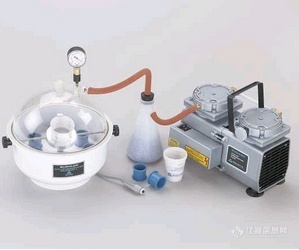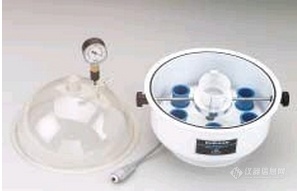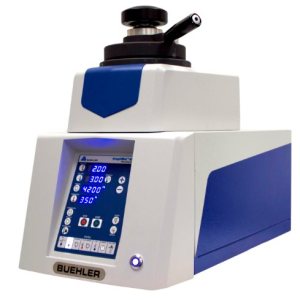仪器种类: 冷镶嵌机
看了镶嵌机、镶样机的用户又看了
产品特点:
产品介绍:
BUEHLER真空浸渗设备可排除样品中含有的空气。如果没有空气的存在,镶嵌的化合物会填充试样的空隙,消除了试样和化合物之间的间隙。因此,边缘保持得到加强,而且易碎样品在研磨和抛光过程中也得到良好支撑。
坚固的真空泵可提供足够的真空以迅速排除任何多孔试样中夹带的空气。通过简单的“O”型圈密封,该高强塑料腔体在整个浸渗过程中保持真空。利用真空腔体内独特的旋转台,多个试样可在同一时间内进行真空浸渗。
设计独特的浇注机械装置使预混的镶嵌化合物可置于腔体中,然后一次性浇入到模具中。可适用于各种环氧树脂和聚酯浇注料的镶嵌(冷)化合物。由于试样封装在真空状态下,从而完全消除了空气进入的可能性。
易于使用:
设计独特的浇注机械装置使预混的镶嵌化合物可置于腔体中,然后一次性浇入到模具中。可适用于各种环氧树脂和聚酯浇注料的镶嵌(冷)化合物。由于试样封装在真空状态下,从而完全消除了空气进入的可能性。
将试样模具放置于真空腔体内的旋转台上
镶嵌化合物混合好以后,将搅拌杯放入到杯架上将真空腔盖于基座上
用真空泵抽至推荐真空26′′Hg(559Torr)
将镶嵌化合物倒入到模具中,然后通过控制开关推进旋转台至另一个模具
浇注好以后保持一分钟,然后转至大气压下;重复该循环数次。
打开腔体,移开镶嵌样,使其正常固化。

真空浸渗设备是用于浸渗多孔和不致密材料的完整系统。

设计独特的旋转真空台和倾斜浇注机械装置使得操作者可以在真空条件下浇注环氧树脂,从而更好地浸渗试样。可更换的真空台内衬可保护旋转台和消除杂乱物。
标准配置:
真空泵、带有转动底盘的容器、真空表、注模杯、量杯、干燥剂、连接件等。
技术性能:
对于存在孔隙和裂纹的样品非常适用,可使冷镶材料在真空状态下充分的填充到样品的孔隙和裂纹中,从而达到完美的注模效果。
操作简单,方便,易于清理;一次最多可镶嵌>10个样品。
保修期: 1年
是否可延长保修期: 是
现场技术咨询: 有
免费培训: 面议
免费仪器保养: 面议
保内维修承诺: 面议
报修承诺: 面议

美国标乐 Buehler | SimpliMet 4000自动镶嵌机
型号:SimpliMet 4000自动镶嵌机 10万 - 30万
美国标乐 Buehler | SimpliVac 真空镶嵌机
型号:SimpliVac 5万 - 10万标乐镶嵌机Cast N‘ Vac 1000的工作原理介绍
镶嵌机Cast N‘ Vac 1000的使用方法?
标乐Cast N‘ Vac 1000多少钱一台?
镶嵌机Cast N‘ Vac 1000可以检测什么?
镶嵌机Cast N‘ Vac 1000使用的注意事项?
标乐Cast N‘ Vac 1000的说明书有吗?
标乐镶嵌机Cast N‘ Vac 1000的操作规程有吗?
标乐镶嵌机Cast N‘ Vac 1000报价含票含运吗?
标乐Cast N‘ Vac 1000有现货吗?
最多添加5台
